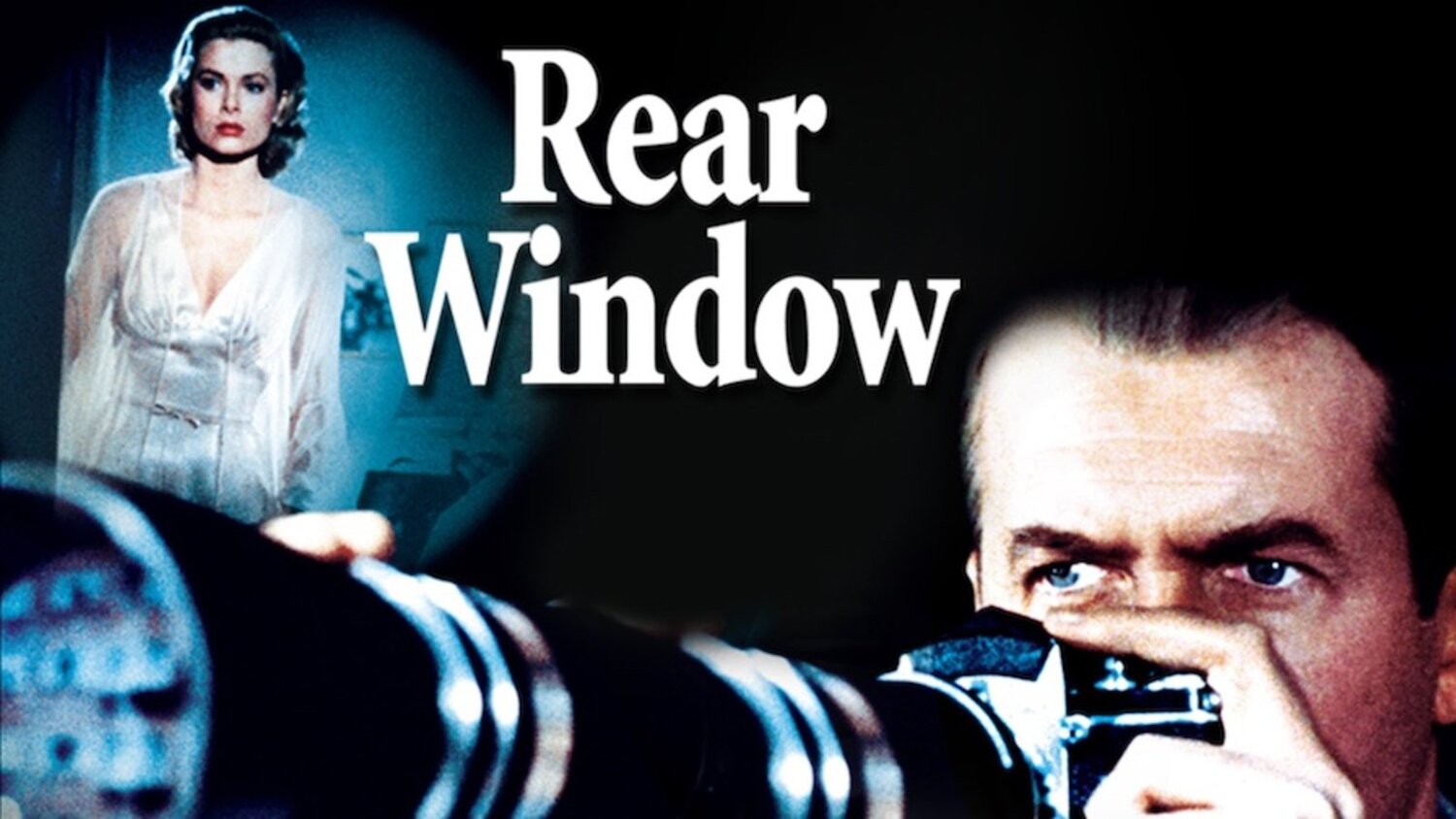
Rear Window, directed by Alfred Hitchcock, is a timeless classic that has captivated audiences for decades. Released in 1954, this thrilling mystery film has become a benchmark in cinematic history, cementing Hitchcock’s reputation as the master of suspense. Starring James Stewart and Grace Kelly, Rear Window tells the story of a wheelchair-bound photographer who becomes an unwitting voyeur, spying on his neighbors from his apartment window. With its innovative and suspenseful narrative, stunning visuals, and exceptional performances, the movie continues to be celebrated as a masterclass in filmmaking. In this article, we will delve into 43 fascinating facts about Rear Window, giving you an in-depth look into the making of this iconic movie and the impact it has had on the world of cinema.
Key Takeaways:
- Rear Window, directed by Alfred Hitchcock, is a timeless classic that explores voyeurism, isolation, and the power of observation, captivating audiences with its suspenseful storytelling and brilliant performances.
- The film’s single-location setting, stunning cinematography, and haunting theme of loneliness make Rear Window a must-watch for anyone who loves thrilling and thought-provoking cinema.
Rear Window was released in 1954.
In the world of cinema, Rear Window remains a classic masterpiece that continues to captivate audiences even today.
It was directed by Alfred Hitchcock.
Hitchcock, known as the “Master of Suspense,” helmed the film with his signature style, creating a tense and thrilling atmosphere.
The movie is based on a short story by Cornell Woolrich.
Titled “It Had to Be Murder,” the story inspired Hitchcock to create an intricate and suspenseful narrative.
James Stewart plays the lead role of L.B. Jeffries.
Stewart delivers a remarkable performance as the curious and wheelchair-bound photographer who becomes an unwitting observer of a potential crime.
Grace Kelly portrays Lisa Fremont, Jeffries’ girlfriend.
Kelly enchants the audience with her elegance and beauty, perfectly embodying the character’s determination to solve the mystery.
The entire film takes place in a single location.
Set in the protagonist’s apartment, the movie utilizes the confined space to heighten the tension and suspense.
Rear Window has a fascinating voyeuristic theme.
The film explores the ethical implications of voyeurism and the ethics of observing others without their consent.
The movie was nominated for four Academy Awards.
Rear Window received nominations for Best Director, Best Adapted Screenplay, Best Cinematography, and Best Sound Recording.
The film’s screenplay was written by John Michael Hayes.
Hayes crafted a compelling script that balanced suspense, drama, and wittiness, captivating audiences from start to finish.
Rear Window was a commercial success.
The film grossed over $36 million at the box office, making it one of Hitchcock’s most successful movies.
It is considered one of the greatest films of all time.
Critics and film enthusiasts alike hail Rear Window as a true cinematic masterpiece with its expertly crafted suspense and superb storytelling.
The film features a stellar supporting cast.
Thelma Ritter, Wendell Corey, and Raymond Burr deliver standout performances in their respective roles, adding depth to the narrative.
Rear Window explores themes of isolation and loneliness.
The apartment complex becomes a microcosm of society, where characters’ lives intertwine, highlighting their desires and struggles.
The set was meticulously designed.
The intricate set of the courtyard and apartment buildings was created to enhance the storytelling and provide the audience with a sense of realism.
The film is known for its brilliant use of sound.
From the distant conversations to the subtle background noises, the sound design adds an extra layer of depth to the suspenseful atmosphere.
Rear Window has inspired many filmmakers and directors.
Its innovative storytelling techniques and masterful execution have influenced countless films and filmmakers in the years that followed its release.
The film was initially met with mixed reviews.
While some critics praised its brilliance, others found fault with its portrayal of women and the ethics of voyeurism.
Rear Window was one of the last collaborations between Hitchcock and composer Franz Waxman.
Waxman’s haunting score adds to the tension and suspense, enhancing the overall viewing experience.
The film’s cinematography is visually stunning.
Hitchcock’s frequent collaborator, Robert Burks, expertly captures every scene, utilizing angles and lighting to magnify the suspense.
Rear Window was not nominated for Best Picture at the Academy Awards.
Despite its critical acclaim, the film was overlooked in the Best Picture category, surprising many in the industry.
The movie was shot entirely in a studio.
Hitchcock recreated the Greenwich Village set on the Paramount Studios lot, allowing for total control over the filming environment.
Rear Window emphasizes the power of observation.
Through Jeffries’ perspective, the film highlights the ability to gather information and draw conclusions from observing others.
The movie’s release was met with controversy in some countries.
Censorship boards in certain countries found the voyeuristic theme and portrayal of relationships to be inappropriate.
Rear Window has been remade and adapted in various forms.
From stage adaptations to unofficial remakes, the film’s enduring popularity continues to inspire reinterpretations of its intriguing premise.
The film’s final shot perfectly depicts the consequences of Jeffries’ actions.
As the camera pans across the courtyard, subtly revealing the aftermath, it leaves the audience with a lingering sense of the repercussions.
Rear Window was nominated for two Golden Globe Awards.
The film received nominations for Best Director and Best Screenplay at the prestigious award ceremony.
The opening credits of the movie are visually captivating.
Set to the rhythmic accompaniment of composer Franz Waxman’s score, the credits feature silhouettes and glimpses of the apartment complex.
Rear Window features Hitchcock’s famous cameo.
In a trademark move, Hitchcock makes a brief appearance in the film, cementing his reputation as the master of suspense.
The movie explores the power of imagination.
As Jeffries becomes obsessed with observing his neighbors, his imagination runs wild, creating a complex web of suspicion and intrigue.
Rear Window has been praised for its character development.
The film delves into the lives of the apartment dwellers, highlighting their unique personalities, desires, and secrets.
The use of color is intentional and symbolic in the film.
Colors are used to evoke mood and enhance the storytelling, with warm hues representing comfort and safety and stark contrasts depicting danger and suspense.
Rear Window has been analyzed from a feminist perspective.
Some critics argue that the film explores gender roles and societal expectations, highlighting the complexities of relationships and femininity.
The film’s script was heavily influenced by photojournalism.
Hitchcock drew inspiration from the visual storytelling found in photojournalism, using Jeffries’ camera lens as a metaphor for observing the world.
Rear Window was a box office success.
The film surpassed expectations, attracting wide audiences with its gripping narrative and suspenseful plot twists.
Rear Window was one of Hitchcock’s personal favorites.
Hitchcock considered the film to be one of his best works, showcasing his mastery in creating suspenseful and thought-provoking stories.
The film’s ending leaves the ultimate conclusion up to interpretation.
Rear Window’s ambiguous ending allows viewers to draw their own conclusions, sparking discussions and debates among audiences.
The movie’s success led to a surge in popularity for suspense thrillers.
Rear Window paved the way for a new wave of suspenseful films, inspiring filmmakers to delve into the genre and push creative boundaries.
The haunting theme of loneliness resonates throughout the film.
As Jeffries witnesses the lives of his neighbors, he becomes acutely aware of the isolation and loneliness that permeates their existence.
Hitchcock meticulously storyboarded the entire film.
With a firm vision in mind, Hitchcock meticulously planned each shot and angle, ensuring that the narrative flowed seamlessly.
Rear Window established Hitchcock’s reputation as a master filmmaker.
The film solidified Hitchcock’s status as one of the greatest directors in the history of cinema, showcasing his unparalleled talent for suspenseful storytelling.
The movie was a critical success.
Rear Window garnered positive reviews from critics, who praised Hitchcock’s direction, the performances, and the film’s gripping storyline.
The film was shot entirely in Technicolor.
The vivid colors not only added to the visual appeal but also heightened the atmosphere of the film, intensifying the sense of danger.
Rear Window is a must-watch for film enthusiasts.
With its impeccable craftsmanship, thrilling storyline, and memorable performances, Rear Window continues to mesmerize audiences and solidify its place in cinematic history.
Conclusion
Rear Window is undoubtedly a classic film that continues to captivate audiences with its suspenseful storyline, compelling characters, and innovative cinematography. With its unique concept of voyeurism and a murder mystery unfolding within the confines of one apartment complex, it showcases Alfred Hitchcock’s exceptional directorial skills. The film’s iconic performances by James Stewart and Grace Kelly, along with the nuanced supporting cast, add depth and believability to the story. Rear Window’s enduring legacy is evident in its influence on subsequent films and its inclusion in numerous “best of” lists. Whether you’re a fan of Hitchcock, a lover of suspenseful dramas, or simply looking for an engaging movie experience, Rear Window is a must-watch that will leave you on the edge of your seat.
FAQs
1. When was Rear Window released?
Rear Window was released on August 4, 1954.
2. Who directed Rear Window?
The film was directed by Alfred Hitchcock, a renowned master of suspense.
3. What is the plot of Rear Window?
Rear Window follows a wheelchair-bound photographer, played by James Stewart, who becomes obsessed with spying on his neighbors. He believes he has witnessed a murder and tries to unravel the mystery before it’s too late.
4. Who are the main actors in Rear Window?
The main actors in Rear Window are James Stewart as L.B. Jeff” Jeffries and Grace Kelly as Lisa Fremont.
5. What is the significance of Rear Window in film history?
Rear Window is considered a landmark film for its innovative use of limited sets, the concept of voyeurism, and the exploration of the human psyche. It is often regarded as one of Alfred Hitchcock’s finest works.
6. Has Rear Window won any awards?
Yes, Rear Window received four Academy Award nominations, including Best Director and Best Screenplay. Although it didn’t win any Oscars, it remains highly regarded in the film industry.
7. Is Rear Window based on a book?
No, Rear Window is an original screenplay written by John Michael Hayes, inspired by a short story titled “It Had to Be Murder” by Cornell Woolrich.
If you're fascinated by the world of cinema, don't miss our other captivating articles. Dive into the gripping realm of suspense films, uncover little-known facts about the iconic actor James Stewart, and explore the life and legacy of the legendary director Alfred Hitchcock. Each article offers a unique perspective on the art of filmmaking, promising to entertain and enlighten movie enthusiasts of all ages. So, grab some popcorn, settle in, and let us take you on a journey through the magical world of cinema.
Was this page helpful?
Our commitment to delivering trustworthy and engaging content is at the heart of what we do. Each fact on our site is contributed by real users like you, bringing a wealth of diverse insights and information. To ensure the highest standards of accuracy and reliability, our dedicated editors meticulously review each submission. This process guarantees that the facts we share are not only fascinating but also credible. Trust in our commitment to quality and authenticity as you explore and learn with us.


